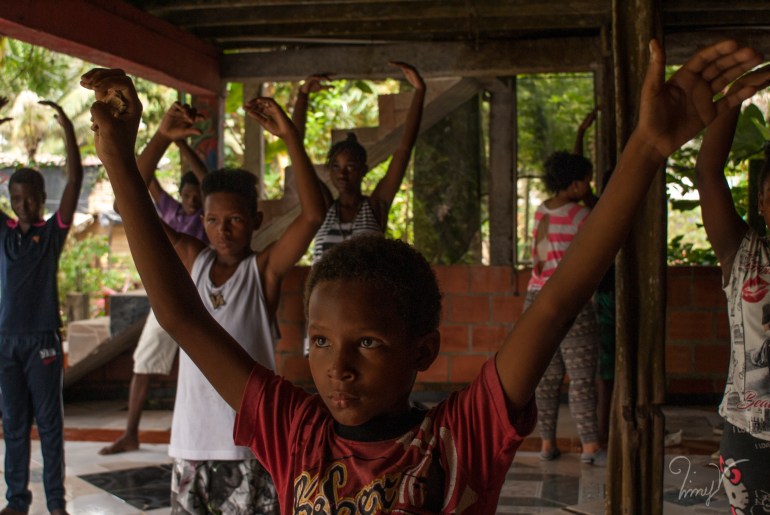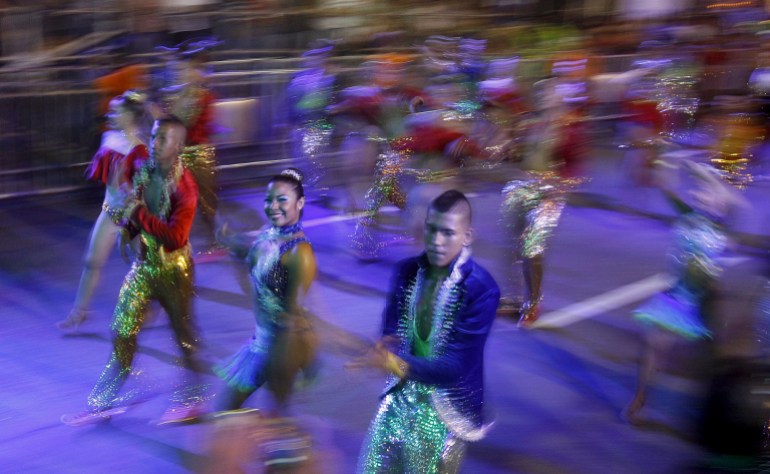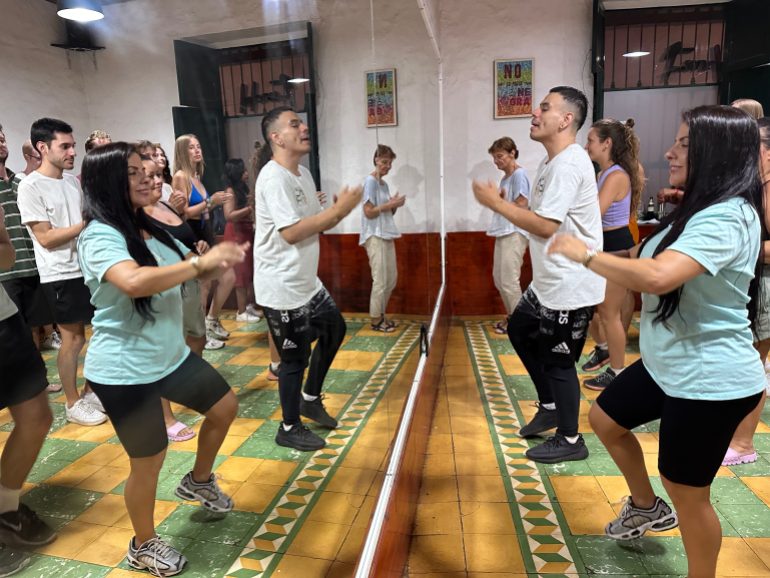Facing high rates of sexual violence, Colombia turns to salsa as therapy | Sexual Assault
Cali, Colombia – As the only sister to nine brothers, Carmen Diaz enjoyed a boisterous childhood in the port city of Buenaventura, Colombia. Together with her siblings, she would wreak havoc around the house or go out in the streets and kick a ragged ball around for hours.
“I adored playing football,” said Diaz, who asked to be called by a pseudonym.
But her joyful, rambunctious childhood came to an end when her uncle started to sexually abuse her, she said. The assault continued over multiple occasions.
When she told her parents about what happened, they refused to believe her and instead accused her of lying. Feeling distraught, Diaz decided to run away from home at the age of 13.
Diaz ended up sleeping on the streets of the nearby city of Cali and became addicted to drugs. Eventually, she found shelter through the city’s social services, which connected her with resources for minors.
That’s how she discovered her lifeline: salsa dancing. It was part of an experimental therapy project run by the local nonprofit, Mi Cuerpo Es Mi Historia, a name that translates to “My body is my story”.
The project combines salsa dancing and psychotherapy to help survivors of sexual violence express their emotions and process their trauma over the course of several months.
“Dancing can help to heal trauma,” said project founder Martha Isabel Cordoba Arevalo, a psychologist and avid dancer who was born and raised in Cali, known as the world capital of salsa.
“When survivors do not want to speak about what happened to them, or if they are not able to, movement gives them a different way of expression.”

Over the past decade, Mi Cuerpo Es Mi Historia has worked with approximately 700 young girls, mostly through referrals from city services. Treatment starts with performance classes, focusing on acting, singing or dancing.
Then, the next step is to let participants explore topics they chose through performance techniques. By the end of the programme, organisers hope the art can be an outlet for participants to understand and cope with their experiences.
Recovering from trauma, however, is never easy or straightforward. Arevalo remembers meeting Diaz, now 28, when she was only a teenager, newly referred to the programme. She observed that Diaz seemed aggressive — hurt by all that she had endured — and did not want to interact with the programme’s psychologists.
“I was afraid of men,” said Diaz. “The male psychologists I spoke to, they made me scared.”
But Arevalo soon discovered that Diaz had a natural talent for salsa. Week by week, the teenager seemed more relaxed.
The fast pace of salsa’s tumbao beat kept Diaz’s mind — and her heels — busy, as she flicked across the dance floor, her body swaying to the sound of trumpets and timbales.
“When I was dancing, I felt free and happy,” Diaz said. “It was the best treatment for me. I don’t feel like a victim any more. I am a survivor.”
A growing body of research supports the claim that dance and movement can have benefits for the mind, as well as the body.
A review of 41 studies published in the journal Frontiers in Psychology in 2019 found that dance movement therapy reduced anxiety and depression, “consistently” improving related conditions.
Dita Federman, a dance movement therapist who has researched sexual abuse, argues this unconventional treatment method can reach some patients in ways other interventions cannot.
“It can be crucial in helping some patients,” said Federman. “Dance therapy can lead to increased heart rate, using coordinated movement and balance, and what happens while dancing is that people are more likely to recall and express past memories.”

But Arevalo cautioned that addressing sexual violence is extremely complex and that no simple solution exists.
“You need time and resources, and you need trained professionals in order to make deep modifications or restorations of lives,” she said. “Not everyone has that luxury.”
Federman also warned that, in every type of therapy, there is a risk of re-traumatisation. Dance is no exception.
“It should be done very slowly, without directly questioning [the survivors] for emotional material,” she said. “If it comes up from them, then it comes up. But it shouldn’t be forced.”
And while there has been research into its efficacy, Federman said knowledge about dance movement therapy remains limited because of the difficulty in obtaining permission to study survivors of sexual violence.
“There’s so much we don’t yet know,” she said.
But proponents believe dance therapy could help make small steps in responding to the stark levels of gender-based violence in Colombia.
One third of women in the Latin American nation have suffered physical or sexual violence at the hands of a partner, according to the United Nation’s Global Database on Violence.
Colombia’s six-decade-long internal conflict has also contributed to high rates of sexual violence. In September, the Special Jurisdiction for Peace — a court set up to investigate crimes committed during the conflict — announced that at least 35,178 people had suffered gender-based violence between 1957 and 2016.
Right-wing paramilitary groups were responsible for the largest number of incidents, at approximately 33 percent. Women made up the vast majority of the victims, comprising 89 percent overall.
“The bodies of women have been used as a target of war,” said Arevalo.
To reduce the risk of re-traumatisation, Arevalo avoids using “direct” dance partners in her sessions with young survivors. Instead, the dancers learn their steps in a larger, coordinated group. And when they pair up, they often use a technique called “mirroring”, whereby dancers replicate their partner’s moves at a distance.
Arevalo said there is also plenty of room for individual improvisation in salsa, which can be danced alone as well as with others.

Her nonprofit includes a pathway for sexual assault survivors to become salsa instructors themselves, so they can pass along their techniques to others — or even set up their own business.
Sofia Murillo is among the graduates of that programme. On a recent December afternoon, she and her fellow teacher Alexander Patiño explained the basic salsa steps to about 25 tourists in a packed dance studio lined with pale yellow and green tiles.
Cali’s brand of salsa is famously fast-paced: In the 1970s, it became popular for DJs to play records at 45 revolutions per minute, much quicker than the usual speed of 33rpm.
Faced with Cali’s whip-fast beats — the galloping pulse of the bongos and cowbells seemingly unrelenting — Murillo’s students struggled to keep up. Their toe taps and turns risked turning into collisions and crushed feet.
But by the end of her class, every one of the tourists was able to cobble together a respectable routine.
“I had negative thoughts in the past,” said Murillo, 40, who became a salsa teacher in 2023. “I was mistreated. But when I’m dancing, it’s different. I forget everything. I smile.”




